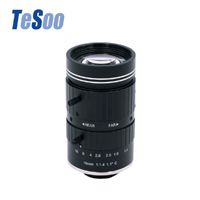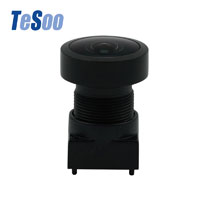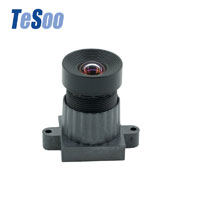Technology Trends of Vehicle Lens
Ⅰ. The vehicle lens improves the stability of optical imaging
With the optimization and upgrading of the vehicle lens technology, the shock resistance, wear resistance, high temperature and low temperature resistance of the vehicle lens are gradually improved, and the picture quality is clearer.
In order to control the stray light caused by frontal glare interference such as headlights, maintain optical imaging stability under extreme temperatures or short-term rapid temperature changes, and effectively capture and distinguish object details, in addition to improving the algorithm from the software, automotive camera lens manufacturers are also actively promoting the overall technological progress of vehicle lens products by improving the coating process, improving technical parameters, and adding conductive heating films outside the lens.
Ⅱ. Lens pixel upgrade: 800W pixel camera
The core of automotive camera lens perception is vision, and the resolution determines the level of vision. With the increasing demand for sensing distance by ADAS functions, more refined and higher-resolution cameras in terms of sensing content are the general trend.
For mainstream new energy car companies, 120W to 200W lenses are no longer sufficient, and the industry has begun to upgrade to 800W pixels.
Ⅲ. Lens material: glass-plastic mixture
vehicle lenses require high durability and thermal stability. According to the material, the car dvr lens can be made of glass or plastic. Glass lenses have high durability and scratch resistance, and have better temperature performance, so they are more used in high-end products. The plastic lens is cheap but the imaging effect is poor, and it is easy to cause deformation of the lens in the harsh use environment of the car, which affects the imaging quality.
At present, considering cost and performance, mainstream manufacturers of automotive lenses are gradually starting to use glass-plastic hybrid lenses, and some high-end lenses use full-glass solutions.
The performance comparison of plastic and glass lenses is as follows:
1. Plastic lens:
Advantages: light weight, low cost, low process difficulty, suitable for mass production;
Disadvantages: slightly lower light transmittance, poor heat resistance, large thermal expansion coefficient, poor wear resistance, low mechanical strength, etc.
2. Glass lens:
Advantages: excellent performance, high light transmittance;
Disadvantages: mainly due to the difficulty of mass production, low yield and high cost.
3. Lens technology: aspherical lens
Spherical lenses can cause aberration problems, that is, the focal point of the light entering from the center of the lens and the light entering the edge of the lens are inconsistent, resulting in blurred images. Spherical lenses require a combination of multiple lenses to reduce aberrations.
The aspherical lens is a lens composed of a spherical surface and a curved surface other than a plane. By changing the curvature of the lens, the light is concentrated at a fixed focus, which solves the problem of aberration, and can be achieved with only one lens. Therefore, aspherical lenses have the advantages of miniaturization, light weight and good imaging effect, and have become the best solution for high-pixel vehicle lenses.
Plastic aspherical lenses are produced by injection molding, while glass aspherical lenses are produced from high-quality optical glass using precision-controlled hot-molding technology.
TeSoo Optoelectronic is a reliable camera lens manufacturer, providing automotive lenses, CCTV lenses, M12 lenses, distortion-free lenses, machine vision lenses, fisheye lenses, etc. With more than 400 workers, advanced high-precision equipment, Tesoo strictly implements ISO9001 & ISO/IATF16949 quality management system standards, and produces more than 10 million lenses each year with high quality and competitive prices. Welcome to consult.
Popular Camera Lens
Hot Camera Lens Articles

 English
English 

